Vases have been a popular and versatile home décor accessory for centuries. The first glass vase ever was manufactured back in 1600 BC, and the production of vases is still continued.
Thus, the market for antique vases is quite huge, so it can be challenging to identify vintage, antique, and replicated vases from each other.
As a result, it can be overwhelming to choose the right type of antique vase for your home’s interior. Now, if you are a keen antique collector, stick around because this article is the perfect read for you.
Following, we will tell you all about identifying and valuation of antique vases. Let’s begin by enlightening you on the difference between an antique and a vintage vase:
Table of Contents
Is There a Difference Between an Antique Vase and a Vintage Vase?
Based on a universal rule, anything that has been around for more than 100 years is old enough to be considered an antique. For an item to be vintage, it has to be at least two decades old. As pretty evident by this rule, the difference between antique and vintage vases is significant.
This difference is significant! Antiques are quite old things, and their age is occasionally enough to confer value. The likelihood that an object will shatter or be destroyed increases with age. As a result, many antiques are unique, which drives up the antique vases worth money.
On the other hand, vintage vases might be simpler to find. There are usually lots of similar types available that were produced within the last century (from the 1920s and afterward).
Vintage vases are rather easy to find, especially since plastic and other durable materials were developed. Of course, this implies that vintage vases worth money are typically less than antique vases.
Yet, several dealers out there dupe customers by selling them a vintage vase at a much higher price, describing it as an antique. Hence, before you set out on a hunt to find yourself a beautiful antique vase, it is essential you know how to identify an antique vase.
How to Identify Antique Vases?
Several things need to be looked at in order to determine if a vase is antique or vintage. Here are some tips that you can follow to identify valuable antique vases:
Examine the Bottom of the Vase
Engraving, inking, or painting were the only three methods used by ancient manufacturers to mark their productions. Usually, you can spot such markings on a vase’s bottom. If you are able to identify such a mark on the bottom of the vase, the chances of it being antique are significantly high.
Over the years, many manufacturers have employed a variety of signatures to indicate the date that a particular piece was created. The trademark could be barely discernible etchings if the vase is made of glass or crystal.
Vases made of ceramic or porcelain will have the maker’s mark stamped or engraved. “925” or “sterling” will be stamped on a silver vase. Such marks on silver vases include the name of the firm and the date of production.
You could also notice a label or manufacturer sticker on some antique vases. The presence of such stamps drives up the value of antique vases.
Hence, if you own such an item, try not to remove the marking from the bottom of the vase as it may become a problem for you in the future if you ever intend to resell the vase.
Recognize Markings
While many ancient vases do not have any sort of antique marks, some of them do. Identifying the maker’s mark is one of the easiest ways to tell if a vase is a valuable collectible or simply a replica.
You might be able to undertake a reverse search to learn more about the goods if you submit an image of the antique marks to the Internet. Then you may perform a web search to see if any related images pop up.
If you prefer a more conventional method, you should visit the library and look through a glossary of old markings. Antique catalogs are also a useful resource if you want to recognize marks on ancient glass vases.
It might be possible that all the research leads you to a dead end because not everything is uploaded on the Internet or updated on the years-old antique catalogs. The next thing that you can do is consult a local antique dealer in your area.
Antique appraisers are likely to have extensive knowledge about antique vases and their markings. Hence, talking to a true evaluator could tell you about the authenticity of your vase.
Check out Overmarks
As evident by the name, overmarks are located above the original maker’s mark. Just turn over the vase and look underneath to check if you can find any stamp concealing the original maker’s mark.
The bottom of the vase may also be gilded, but that is only done to give it a final and smooth touch for finer edges. Although, it may have resulted in the obscuring of the original stamp or mark.
In case the overmark is visible, it is safe to estimate that the vase was made sometime around 1880 and 1930. The majority of these overmarked vases come from Europe.
If you are unable to identify any marks on your vase, which does not mean your vase does not have any value. It might still hold significant value, but it could be tricky to track its origin. Hence, visiting an antiquarian is the best thing you could do to learn about it.
Meanwhile, check out this list of the 15 most valuable antique vases. Maybe you could match your vase to any of these below or get an idea of valuable vases to look for.
15 Most Valuable Types of Antique Vases
1. 1950s Hobnail Milk Glass Vases ($10-$30)
It was created for the first time in the 1600s and rapidly became well-known for its exquisite simplicity. Nowadays, the Hobnail vintage milk glasses are sought after by both decorators and collectors at antique stores and thrift shops.
Initially, this kind of glass was developed as a less expensive substitute for porcelain, which was greatly valued and brought into Europe from China. Over the years, milk glass has experienced various resurgences in popularity.
The late 1880s and early 1890s, as well as the first couple years of the 20th century, were possibly when milk glass reached its height of popularity. At that time, milk glass was created in a wide range of shapes and styles.
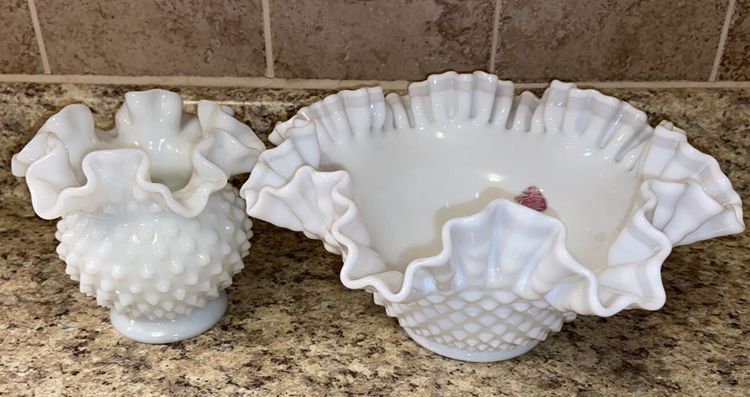
2. Carnival Glass Vases ($20-$50)
Iridill glass, made by the Fenton Art Glass Company starting in 1908, served as the foundation for Carnival glass. Carnival glass is a well-liked collector’s item that was once offered for free due to its breathtakingly gorgeous hues, iridescent gloss, and limitless diversity.
Currently, it’s typical for individual pieces to sell for $20 to $50 at auction, with more sought-after objects going for much more. Carnival glass vases are very valuable. Antique carnival glass vases are readily available on antique shops and online platforms like eBay and Etsy, such as the one shown below:
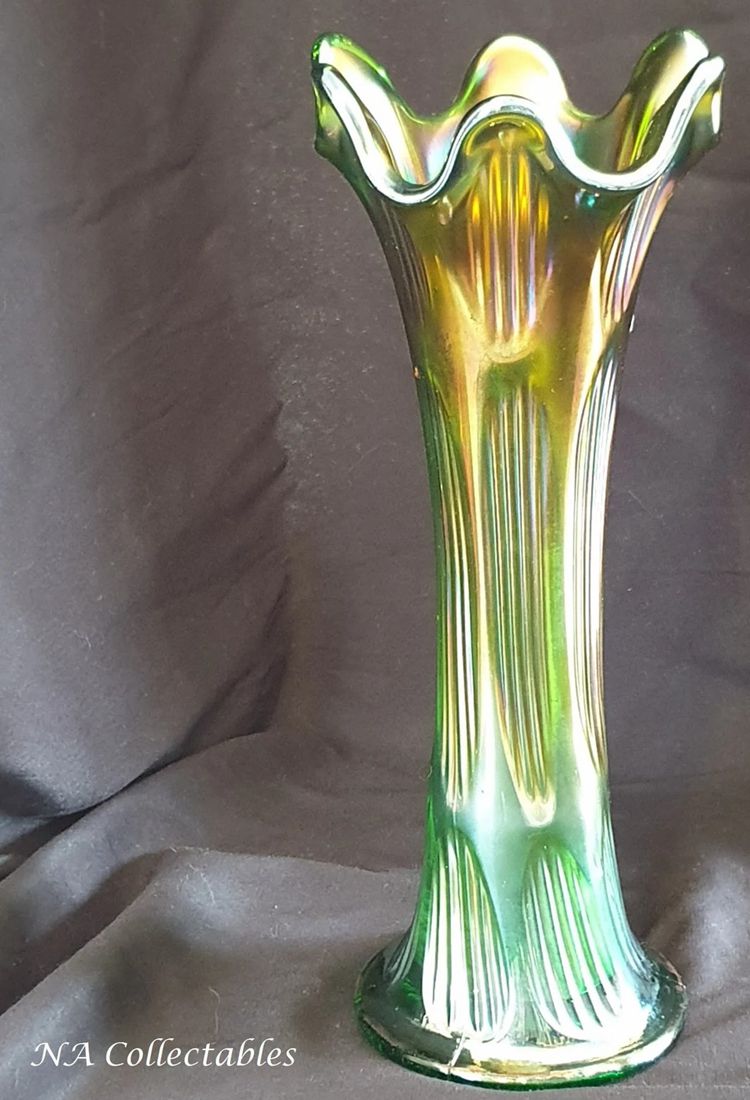
3. Haeger Vases ($10-$120)
The first and most important thing to understand about Haeger ceramics is how versatile its products are. Haeger pottery opted to design the ordinary as sophisticated, whereas other American potters concentrated on creating mainstream ceramics with sophisticated designs.
Haeger decided not to make plates or utensils but instead created ornamental pottery that complemented each style. This prompted them to produce vases, lighting bases, planters, and other items in unusual shapes in large quantities.
The “Adam and Eve” pottery collection was Haeger Potteries’ first. Every design and product was unique, excellent, flawless, and painstakingly created.
However, the glazes that the Haeger Potteries used were their top sellers. Haeger pottery won the hearts of collectors and craftspeople with its luster, color, richness, polish, and durability.
Haeger pottery items can now be found on the shelves of sophisticated art and pottery collectors. However, the value of each handcrafted Haeger pottery item is immeasurable to many who recognize its significance.
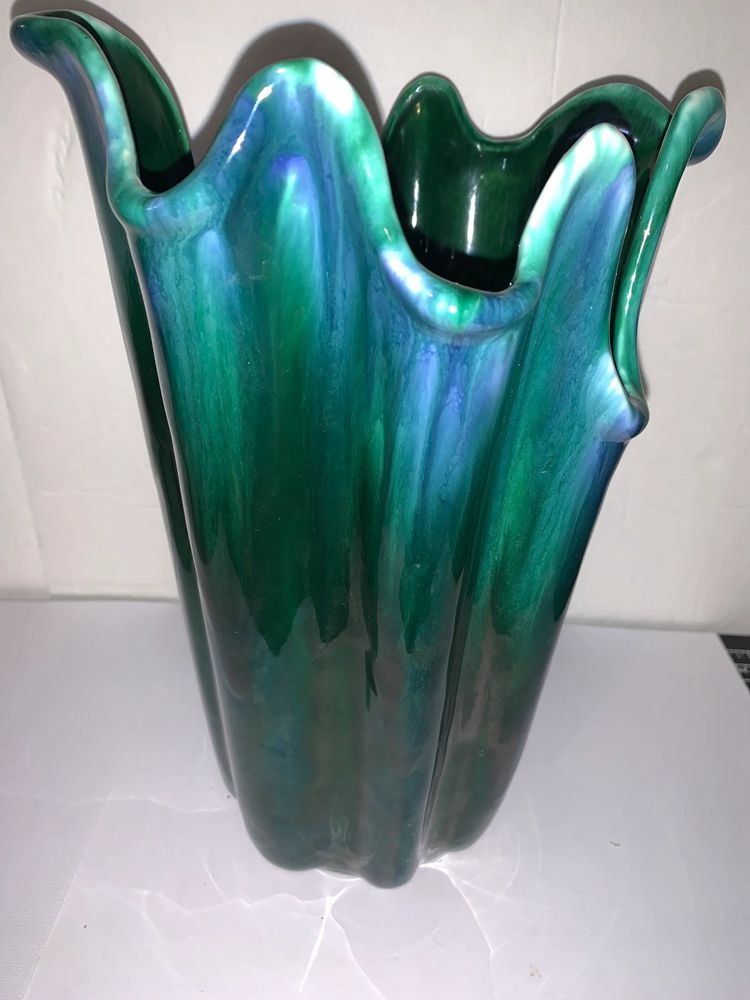
4. Antique China Porcelain Vases ($20-$200)
The delicate nature of Chinese porcelain vases is particularly admired. Giving a detailed description of a Chinese vase is challenging.
To set them apart from other works, certain traits do, nevertheless, stick out. Vases have been used in China for a very long time, serving a variety of purposes.
Terracotta, stoneware, or bronze can be used to make the vase, which can also be used merely as decoration.
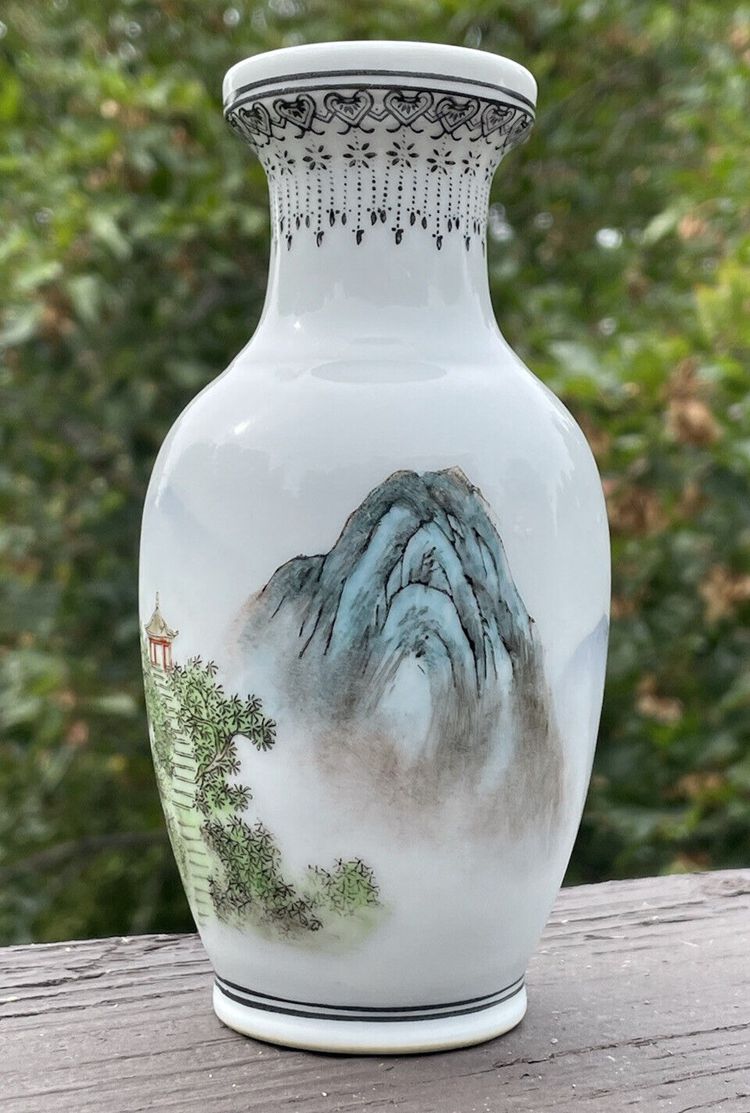
5. Hand Glass Vases ($20-$500)
A hand vase is shaped like a hand grabbing a vase that could be in the form of a fan, cornucopia, trumpet, cluster of leaves, or torch. Hand vases made of glass initially appeared a few years after their porcelain counterparts, around the 1870s.
They quickly gained popularity as novelty items. They were produced by numerous businesses in a number of nations, including the UK, USA, and Bohemia, in a broad range of colors, styles, and sizes.
They have been produced in India and other Asian countries in recent years. According to the frequency of hand vase design registrations, the 1870s and 1880s were the glass hand vase’s golden age.
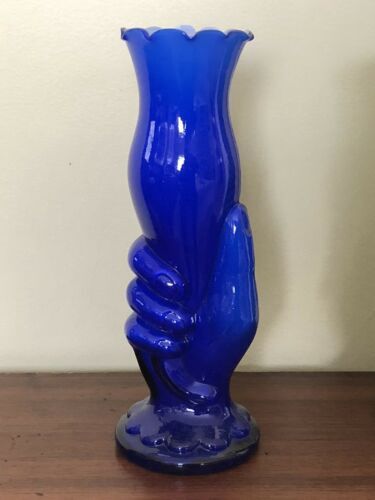
6. Bohemian China Vases ($20-$600)
Bohemian china, which originated in what is now Czechoslovakia, was highly valued for its elegance and delicacy. A set of Bohemian china vases frequently sells for over $500 and are frequently sold in pairs. Most items sell for between $50 and $100.
For hundreds of years, border regions with the right sands and ores produced rough glass objects. Then, some Venetian glass blowers, which had been driven from the island of Murano by strict union laws, immigrated there. Bohemian glass became renowned throughout Europe for its exquisite etching and intricate painting.
Popes and kings bought the best of these vases from where they further raised in value.
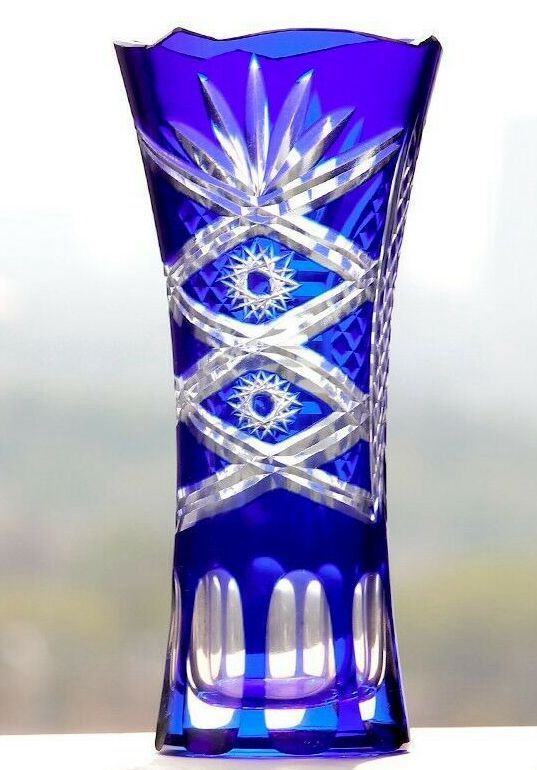
7. Antique Cut Glass Vases ($50-$800)
Cut glass has been used since ancient Egypt (1500 BC), and as the artifacts became more and more popular, glass cutting gained appeal in Rome, the Middle East, Turkey, Venice, and the rest of Europe. Metal drills were first used to cut glass and then stone wheels. The glass design was created by cutting wheels of varying diameters.
Although glass was thought to be cheap, cutting glass required highly experienced craftsmen, which increased labor costs; soon, cut glass vases were considered premium goods and rose in value. They are still popular today among collectors of antique vases.
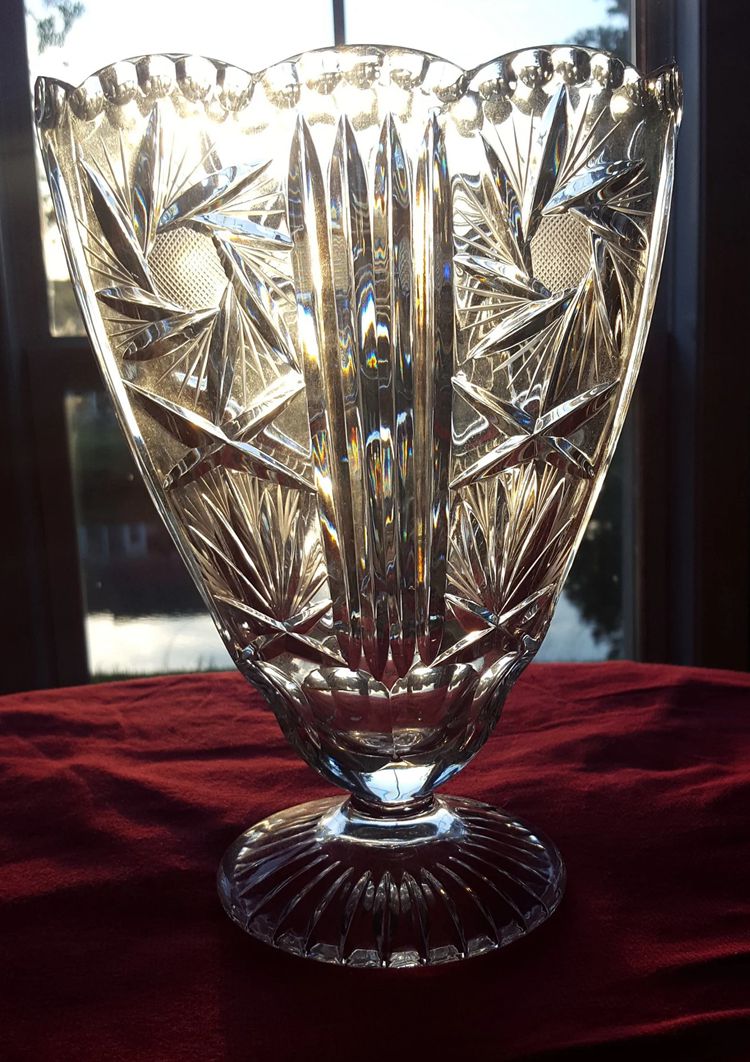
8. Late Victorian Vases ($25-$1,000)
While these vases were produced around the time of the Art Nouveau Vases, they feature different characteristics, so it is not tricky to tell them apart.
The late Victorian vases depicted mythological creatures or showed civilization scenes. These vases are typically adorned with golden elements, perhaps one reason why they were extremely popular among the rich of that time period.
A Late Victorian vase in good condition can sell for above a grand if the paint is not chipped and the vase has any markings of its manufacturer. Otherwise, they can sell for as low as $25.
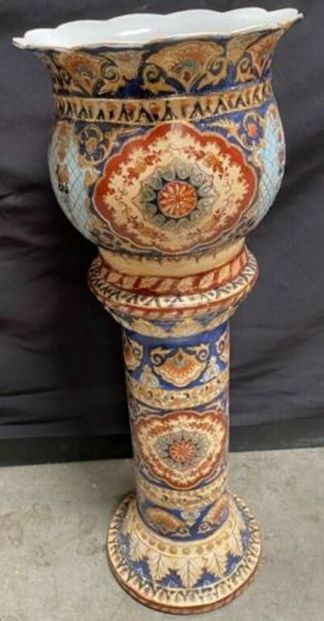
9. Depression Era McCoy Vase ($100-$1,000)
Despite being founded in 1848, the McCoy Pottery Company did not start producing art pottery until 1926, when it started producing vases and other ornamental items.
These vases had a bright and cheery aesthetic, which played a big part in their appeal throughout the Great Depression and the immediate post-secondary war period.
Additionally, McCoy consistently released new designs. Soft pastels and primary colors, gentle humor, smooth surfaces, “happy” forms, and a focus on children’s products made McCoy pottery distinctive and well-liked in general.
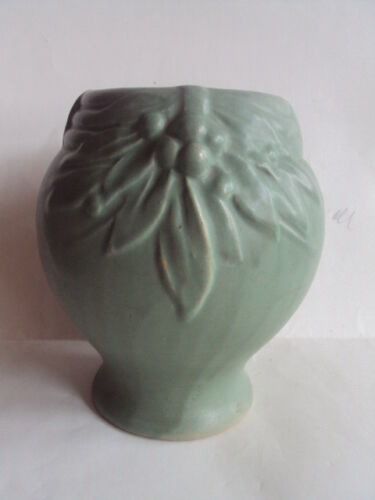
10. French Faience ($40-$1,500)
Before the construction of factories for soft-paste porcelain, Faience, or tin-glazed and enameled earthenware, initially appeared in France during the sixteenth century and attained widespread use among affluent clientele throughout the 17th century and early 18th century.
Faience can be made from a variety of clays, but what most distinguishes it is the milky opaque white hue that tin oxide gives the glaze.
Tin-glazed earthenware was created in the Middle East during the seventh century and spread to Europe through expansionism, trade, and exchange.
Spain saw the emergence of the first European faience workshops in the tenth century. Faience, also known as maiolica, first appeared in Italy in the 13th and 14th centuries.
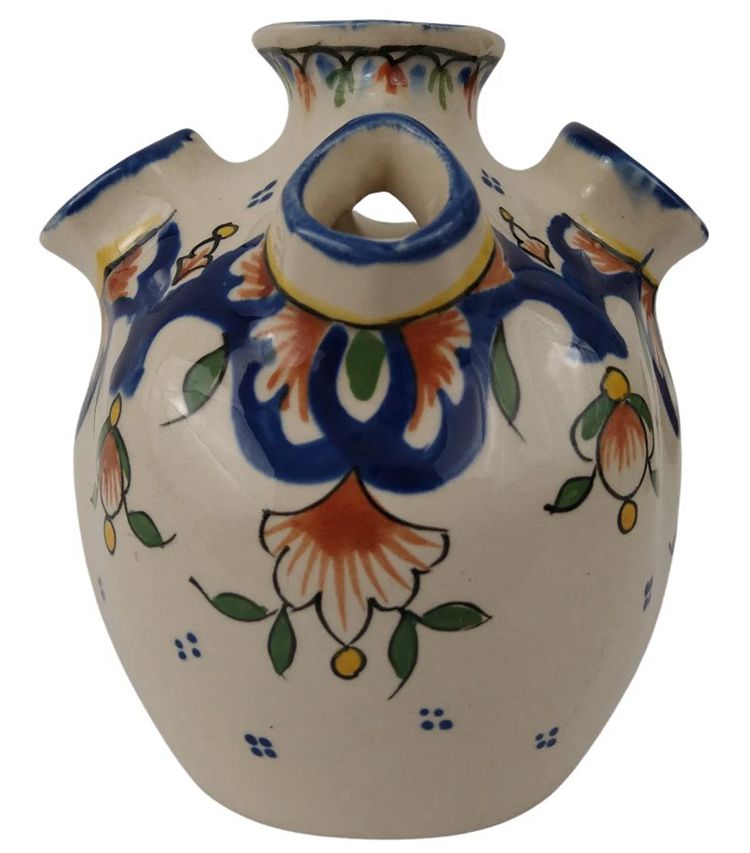
11. Silver Metal Vases ($50-$1,500)
Silver-colored metal vases come in a variety of ranges and values. Many are silver-plated, while others are not even made of silver.
Sterling silver, which contains 92.5% pure silver, has a high price. A sterling silver vase can cost hundreds of dollars, whereas an ancient silver-colored vase may be valued at around $50.
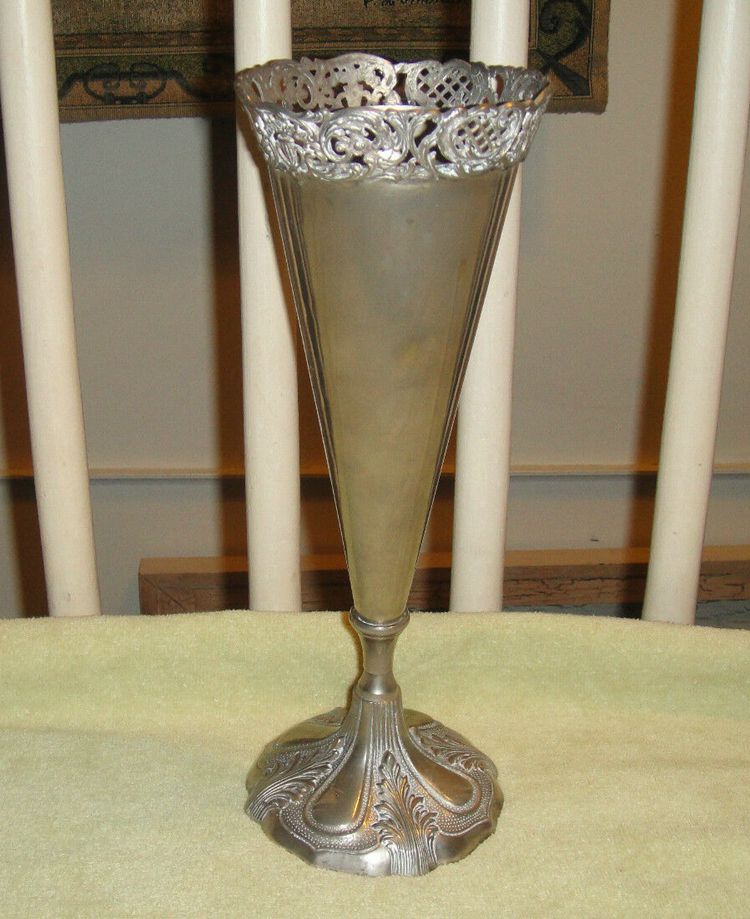
12. Art Nouveau Transitional Vases ($90-$1,500)
Natural elements such as sculptural, arches, sinuous, organic shapes, sensual decoration, and bending lines serve as the inspiration for the Art Nouveau style.
Stylized representations of foliage, flowers, vines, insects, animals and other natural components are popular motifs often found on these vases.
The Art Nouveau transitional vases do not follow a particular shape or pattern. They were exclusively made when the world was transitioning from the Victorian Era to the Art Nouveau Era.
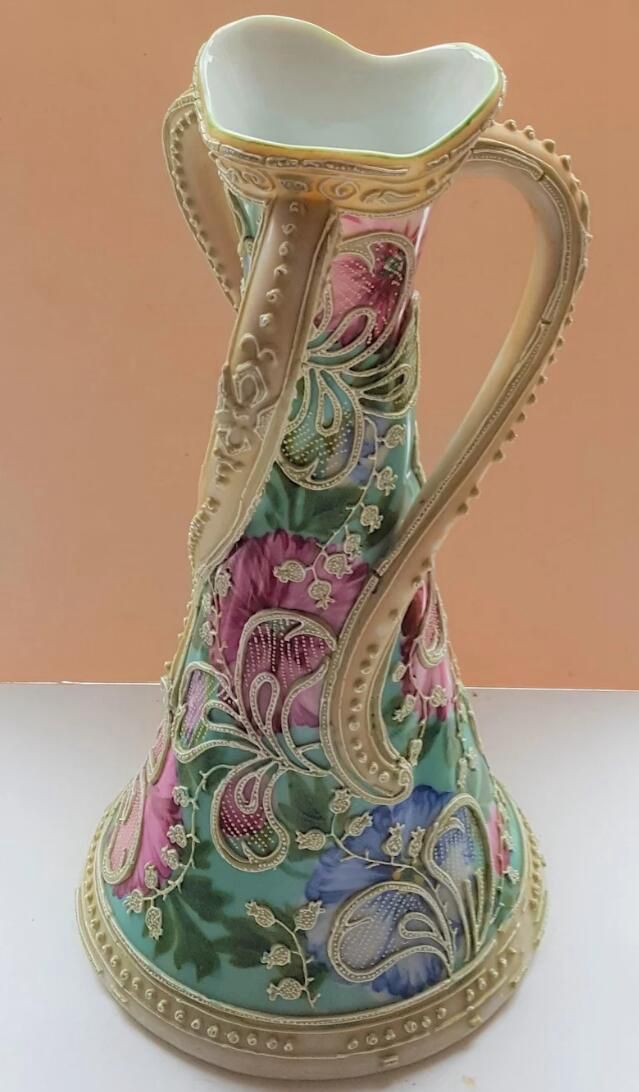
13. New England Glass Vases ($200-$1,500)
The New England Glass Company manufactured these glass vases in the 19th century, from where they rose to fame. Even today, these vases are highly precious and greatly sought-after by collectibles.
Even though the New England Glass Company produced several types of vases, these were the only ones that received such popularity. Additionally, many other glass companies of that time tried to replicate the design but failed to do so.
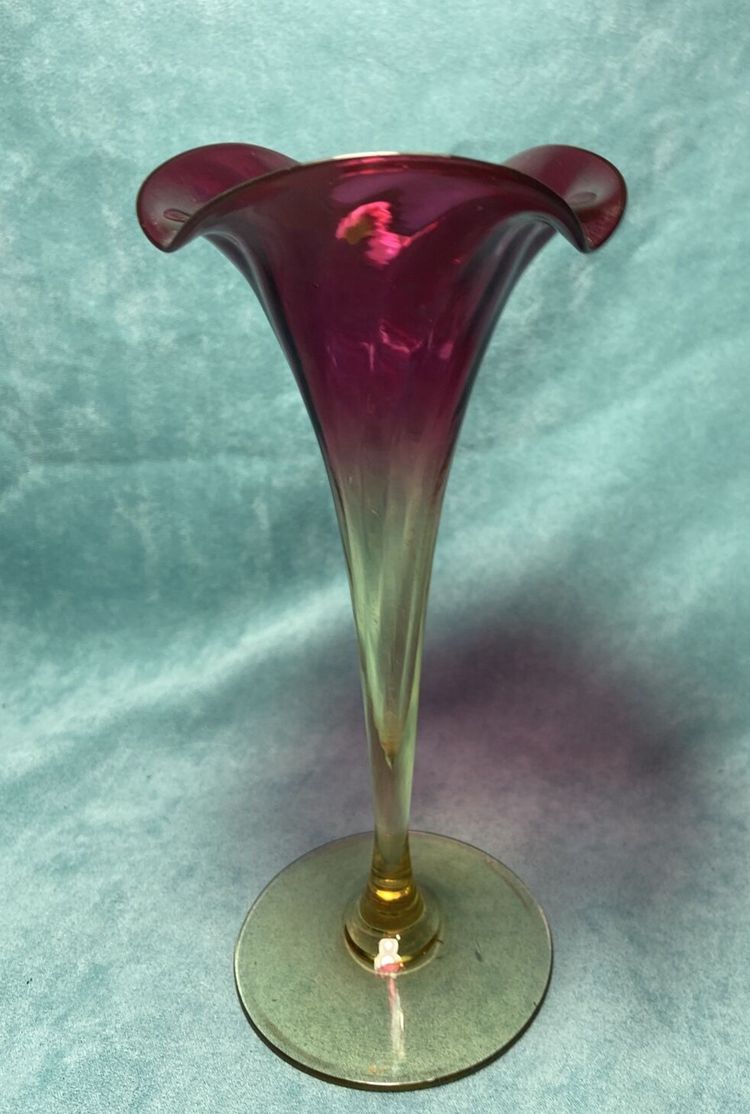
14. Chinese Ming Vases ($200-$3,000)
The China Ming Vases were made between the 13th to 16th centuries during the Ming period. Fine porcelain is used to create the characteristic blue and white pattern on Ming vases.
A single piece of the exceptionally high-quality porcelain produced during this time period would frequently change hands more than 70 times before being regarded as complete.
Because of this, such vases were seen as extremely unique and were acquired as a status symbol by the affluent and famous.
These porcelain vases are regarded as the most valuable ceramics and works of art to have originated in China in the modern age. This is mainly because these vases were so rare and in such high demand throughout the Ming era all around the world.
Due to the high value of Ming vases, you will find several imitations of them out there. The best tactic to identify the vase’s creation date and value is to look at how it was made.
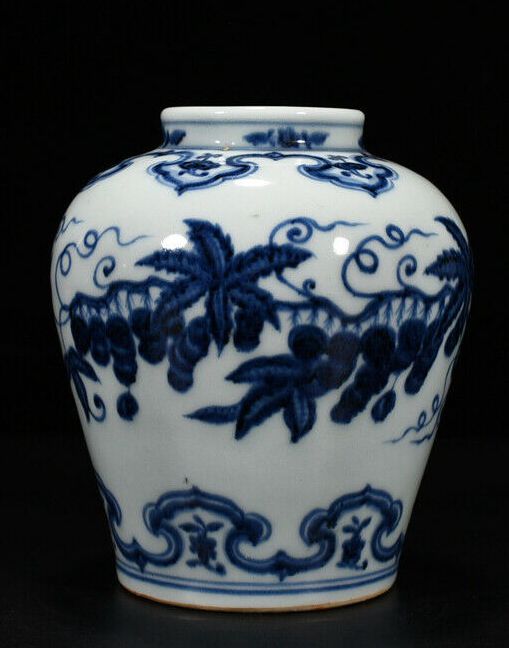
15. German Dresden Vases ($450-$8,500)
Due to its strength and beauty, hard-paste ceramic from China and Japan was a common import in Europe from the beginning of the 18th century.
The ruler of Saxony founded the Meissen Porcelain Company, the first porcelain factory in Europe, following the accidental discovery of the porcelain formula. This is where German Dresden Vases manufacture first began.
Dresden porcelain included tiny figurines mimicking the delectable sugar ornaments used on European dining tables and elaborately painted vases, urns, and crockery. These decorations typically featured pastoral imagery or pictures of street vendors.
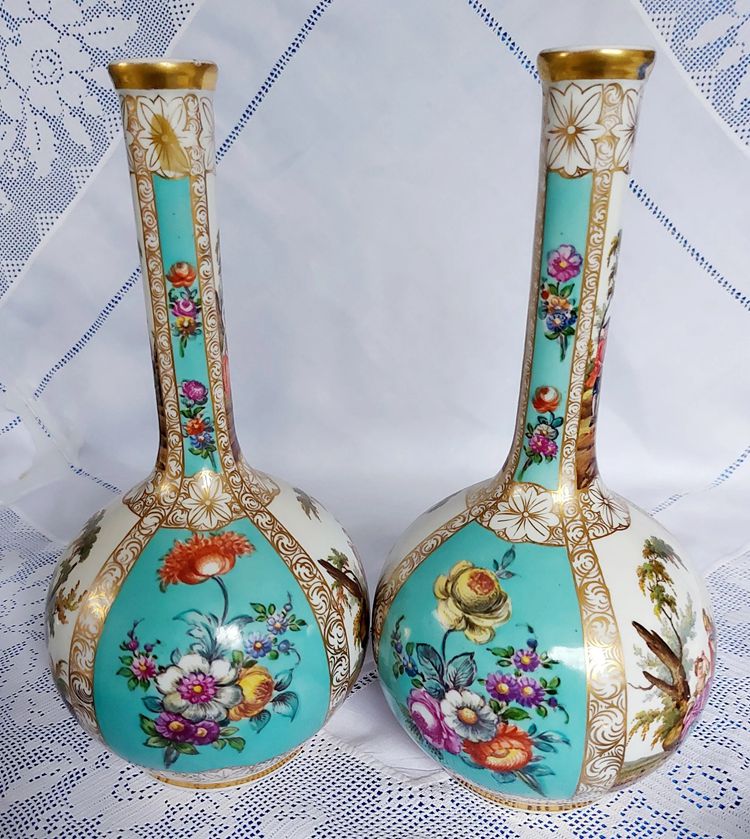
How to Assess the Value of Antique Vases?
Old vases worth money depend on several factors and, most importantly, their quality. Some ancient vases can only fetch you a few dollars, but some can sell for a fortune. So, let’s look at the factors that can influence the value of an antique vase:
Rarity
The price of an old vase differs significantly depending on how rare it is. A glass vase produced in a design or color manufactured in huge quantities typically has a lesser value. If it’s rare, collectors might be interested in purchasing it.
Condition
No matter how rare a glass vase may be, its condition greatly increases its worth. For instance, a rare glass vase in poor shape is not worth as much as one in perfect condition.
Therefore, a glass vase with cracks, splits, discolorations, etc., is worth significantly less than the same item in mint condition.
Origins
An antique glass vase’s provenance or ownership history can increase its monetary value, especially if it came from a well-known historical figure. When an antique item is branded with the artist’s name or initials, it has a special worth.
Demand
Even if it is uncommon, an incredibly hard-to-find antique vase can depreciate if no one is seeking to buy it. Finding a market crowded with potential customers looking for antiques is ideal.
A glass vase’s value will probably increase if there is enough demand. The best vintage glass vases are highly sought after and are in short supply. They will therefore be much more valuable because of this.
Check out this video on the valuable ceramics & pottery antiques by Dr. Lori!
To Sum It Up
Educating yourself before you step out to either shop for an antique item or to hunt potential buyers of an antique item is highly important. That is the only way you can get yourself a good deal.
We aimed to give you a concise but thorough insight into the history of vases in this article. Therefore you now have the knowledge necessary to assess their market value and authenticity.
So, let us know in the comments section below if this guide was helpful for you!





![Where To Sell Antique Furniture In 2022 [Ultimate Guide]](https://www.jacquelinestallone.com/wp-content/uploads/2022/09/Etsy-Your-Place-To-Buy-And-Sell-All-Things-Handmade-600x450.jpg)


